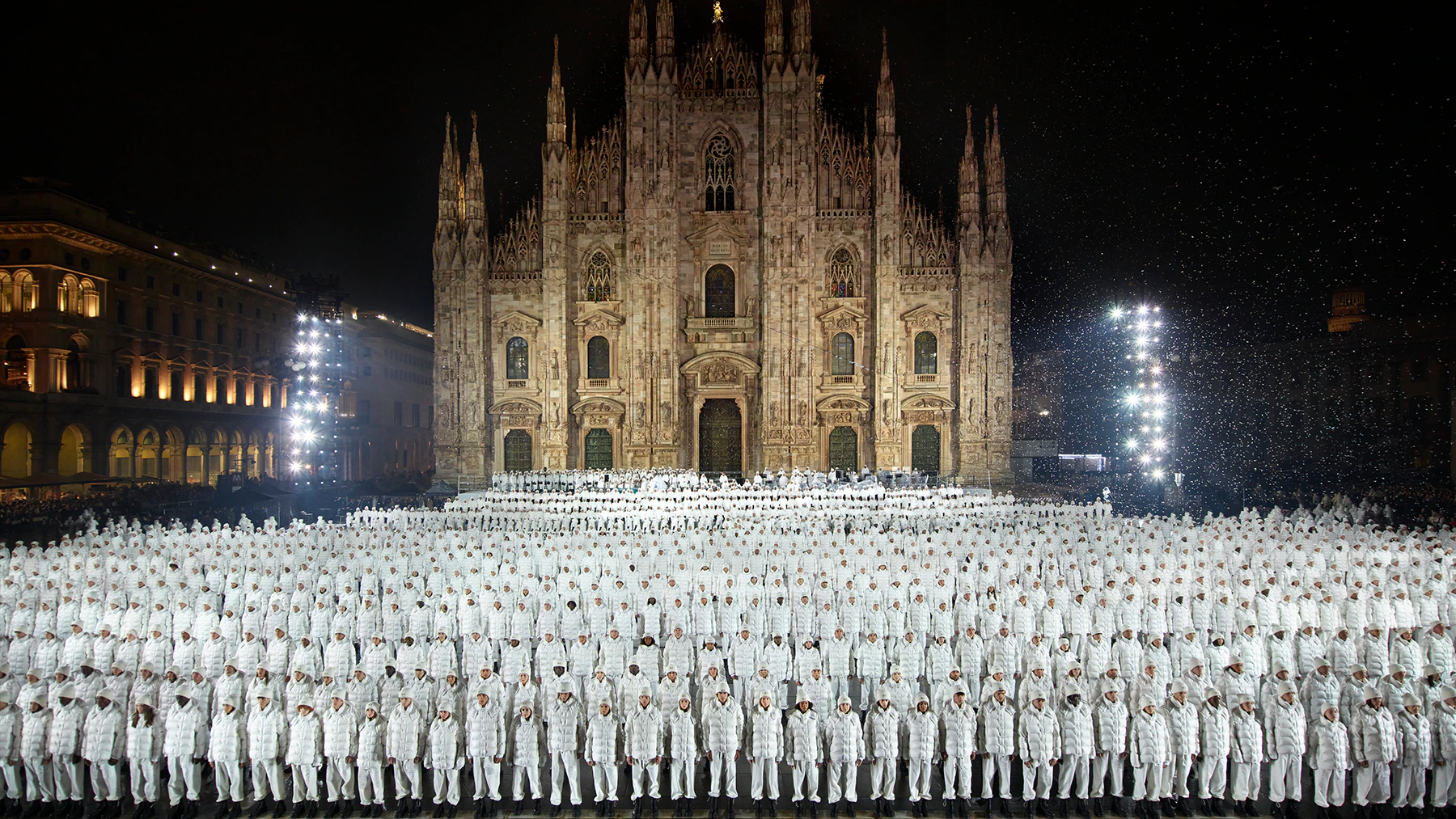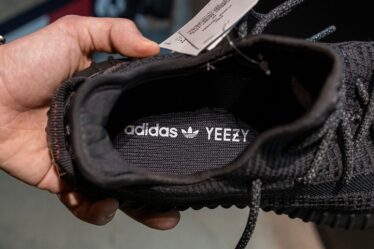
MILAN — For nearly two decades, Moncler has leaned on dramatic fashion week performances to nudge along the repositioning of its sporty down jacket into a luxury object.
Saturday nights’ spectacle in front of Milan’s Duomo cathedral, in the heart of the city, was its most ambitious yet. Nearly 2,000 dancers, including La Scala’s prima ballerina, wore the brand’s signature Maya puffers, all in white, while performing a spiky routine by French choreographer Sadeck Berrabah.
The event, which attracted a crowd of nearly 18,000, had a peg: Moncler’s 70th anniversary. But it also marked something of a clean slate for the brand, which is recalibrating its strategy. The Milan-listed company, which acquired Stone Island in 2021 and reported annual sales of €2.1 billion that year, plans to keep up growth by investing in high-potential categories — like shoes and technical mountain sports gear — further developing its digital shopping experience and revamping Genius, its popular collaboration series that set an industry precedent.
In an interview before the show at his black marble-floored home in Milan, Moncler CEO and chairman Remo Ruffini shared what’s next for the company.
Rethinking Genius. Rather than leaning on one big-name creative director, Ruffini has long used designer partnerships and collaborations to keep Moncler in the fashion spotlight. In 2015, runway lines designed by Thom Browne and Giambattista Valli were replaced by a sprawling programme of collaborations called Genius, with Moncler bringing on as many as eight attention-grabbing designers per year to design new concepts. Collections signed by Valentino’s Pierpaolo Piccioli, Craig Green and Hiroshi Fujiwara were catnip for Instagram, and helped Moncler stay in the conversation.
The last Genius unveiling was at Milan Fashion Week in September 2021, giving the company a lengthy break to make room for the 70th anniversary celebration, as well as a chance to tweak the strategy.
“Genius is still strong, but it needs evolution,” Ruffini said.
When Genius returns during Milan Fashion Week in February 2023, it will be more focused on wooing Gen-Z — and on reaching an audience beyond the fashion bubble. That means pulling in artists from other areas of culture — a nod to Moncler’s collaboration with Pharrell in 2009 — to design new capsules.
Renewing ambitions in skiwear . Over the past year, Moncler has begun to think about its business in terms of three categories: the mainline — accounting for around 85 percent of sales, including hero items like the aforementioned Maya coat — Genius and Grenoble, the brand’s haute ski-wear line, which is being positioned to capitalise on increased market demand for technically proficient, high-fashion pieces.
Transforming the online experience. Ruffini was reluctant to talk about the metaverse, per se, but said that he sees the digital shopping experience changing dramatically over the next several years.
“I don’t feel anymore that something so static, that looks like a 1970s catalog, will work anymore,” he said. “My dream, not for the near future but for the mid-term future, is that when you go inside, you start surfing: I don’t want to see any more static things.”
Expanding categories. While jackets remain Moncler’s bread and butter, Ruffini sees shoes and knitwear as two categories ripe for expansion. The brand launched its new footwear line, led by a former Nike designer, in September, with a focus on sneakers that work well in the urban environment where most people wear their Moncler jackets. They perform, but they’re not performance shoes.
“We don’t want to make sneakers just to make sneakers,” he said. “I want to make something that links with our DNA.” He also wants to continue expanding in knitwear, which he said succeeds when there is a novel technical detail, like a nylon insert or down filling worked into the piece.
Engaging micro communities. Ruffini is interested in targeting ultra-narrow, super-specific groups of consumers by offering different types of products for different tastes, with the conviction that getting granular can open up new markets. The new iteration of Genius will reflect that. “Some city you’ve never heard of suddenly becomes super important [to the business],” he said.
Using profits to fuel growth. In the first half of the year, sales at Moncler were €918 million, up 48 percent from 2021. Operating profitability is a staggering 30 percent, giving the company room to invest heavily in supply chain, marketing and other forms of customer acquisition. While physical retail is once again driving sales, Ruffini says the company doesn’t need to open more stores. (It already has 240.)
Keeping an eye on global markets. Ruffini said he’s keeping a close eye on both the US and Europe, where inflation is at an all-time high. “America was super strong until July,” he said. “Then honestly, a lot of customers moved to Europe.” He suggested that the massive influx of tourists from the US to Europe — and in particular, Italy — has caused a “boom” in the region, with American travellers taking advantage of the dollars historic strength now making up a “double digit” percentage of sales.
He’s also watching for what happens when China’s quinquennial congress is held in mid-October — which could bring policy changes affecting supply chain, domestic retail and other issues pertinent to luxury — as well as the mid-term elections in the US.


